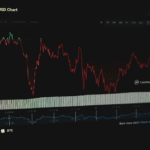The term “tokenomics” blends “token” and “economics,” signifying the study of economic models and principles underlying digital assets. As blockchain technology and cryptocurrencies evolve, understanding these economic frameworks is crucial for investors, developers, and regulators. Tokenomics encompasses various factors, including token supply, demand, distribution methods, and market valuation, which collectively determine the sustainability and value of digital assets.
Fundamental Economic Principles
Supply and Demand Dynamics
Like traditional markets, digital asset values are influenced by supply and demand dynamics. Limited supply and increasing demand can drive up the value of a token. For example, Bitcoin’s supply is capped at 21 million coins, creating scarcity that enhances its value over time. Conversely, an oversupply of tokens can lead to decreased value unless balanced by corresponding demand.
Utility and Use Cases
The utility of a token significantly affects its value. Tokens designed for specific use cases within a blockchain ecosystem tend to have more stable demand. Ethereum, for instance, supports smart contracts and decentralized applications (dApps), making its native token, Ether, essential for network operations. This intrinsic utility sustains demand, impacting its long-term value.
Economic Models in Tokenomics
Inflationary vs. Deflationary Models
Tokens can be designed with inflationary or deflationary models. Inflationary tokens, like Dogecoin, have no supply cap, which can dilute value over time. On the other hand, deflationary tokens, such as Bitcoin, have mechanisms to reduce supply over time, potentially increasing value. Some projects implement token burn mechanisms to remove tokens from circulation, thus creating scarcity.
Network Effects and Adoption
Network effects play a crucial role in the value of digital assets. As more users adopt a particular token, its utility and demand increase, often leading to higher value. Ethereum’s extensive developer community and widespread adoption of its platform exemplify how network effects can drive a token’s success. The more people use and develop on Ethereum, the more valuable Ether becomes.
Liquidity and Exchange Listings
Liquidity is vital for the health of a digital asset market. Tokens listed on major exchanges benefit from higher liquidity, making it easier for investors to buy and sell. Listing on reputable exchanges also enhances a token’s credibility and visibility, contributing to increased demand and value. The process of getting listed involves rigorous vetting, ensuring only robust projects gain access to these platforms.
Evaluating Token Value
Market Capitalization and Circulating Supply
Market capitalization (market cap) is a standard measure of a token’s value, calculated by multiplying the current price by the circulating supply. This metric provides a snapshot of the token’s market value and helps compare different tokens. However, it is essential to consider other factors, such as the token’s utility and network effects, to get a comprehensive valuation.
Discounted Cash Flow (DCF) Model
Traditional valuation methods, like the Discounted Cash Flow (DCF) model, can also apply to digital assets. This model estimates the present value of future cash flows generated by a token. While many tokens do not generate direct cash flows, the model can be adapted to consider utility, network effects, and potential future adoption rates. This approach requires projecting long-term growth and discounting it back to present value.
Challenges and Regulatory Considerations
Volatility and Market Maturity
Cryptocurrency markets are known for their volatility, posing challenges for stable valuation. The market’s nascent stage means it is subject to rapid changes in technology, regulation, and investor sentiment. Higher education among fund managers has been linked to better handling of this volatility, highlighting the importance of expertise in navigating these markets.
Regulatory Landscape
Regulatory frameworks like the Markets in Crypto-Assets (MiCA) in the European Union aim to create a safer and more predictable environment for digital assets. These regulations focus on consumer protection, market integrity, and financial stability, ensuring that crypto businesses operate within a structured and compliant framework.
Tokenomics is a complex field that blends traditional economic principles with the unique characteristics of digital assets. Understanding the factors that influence token value, such as supply and demand dynamics, utility, network effects, and regulatory considerations, is crucial for anyone involved in the cryptocurrency space. As the market matures, these economic models will continue to evolve, providing a more stable and robust foundation for digital assets.
Step Into the Future With Kenson Investments
Unlock the potential of digital assets with Kenson Investments. By utilizing our proprietary trading methods, you can craft a robust portfolio of digital assets with the guidance of our bitcoin investment consultants and digital asset management consultant.
Get in touch with us today!















